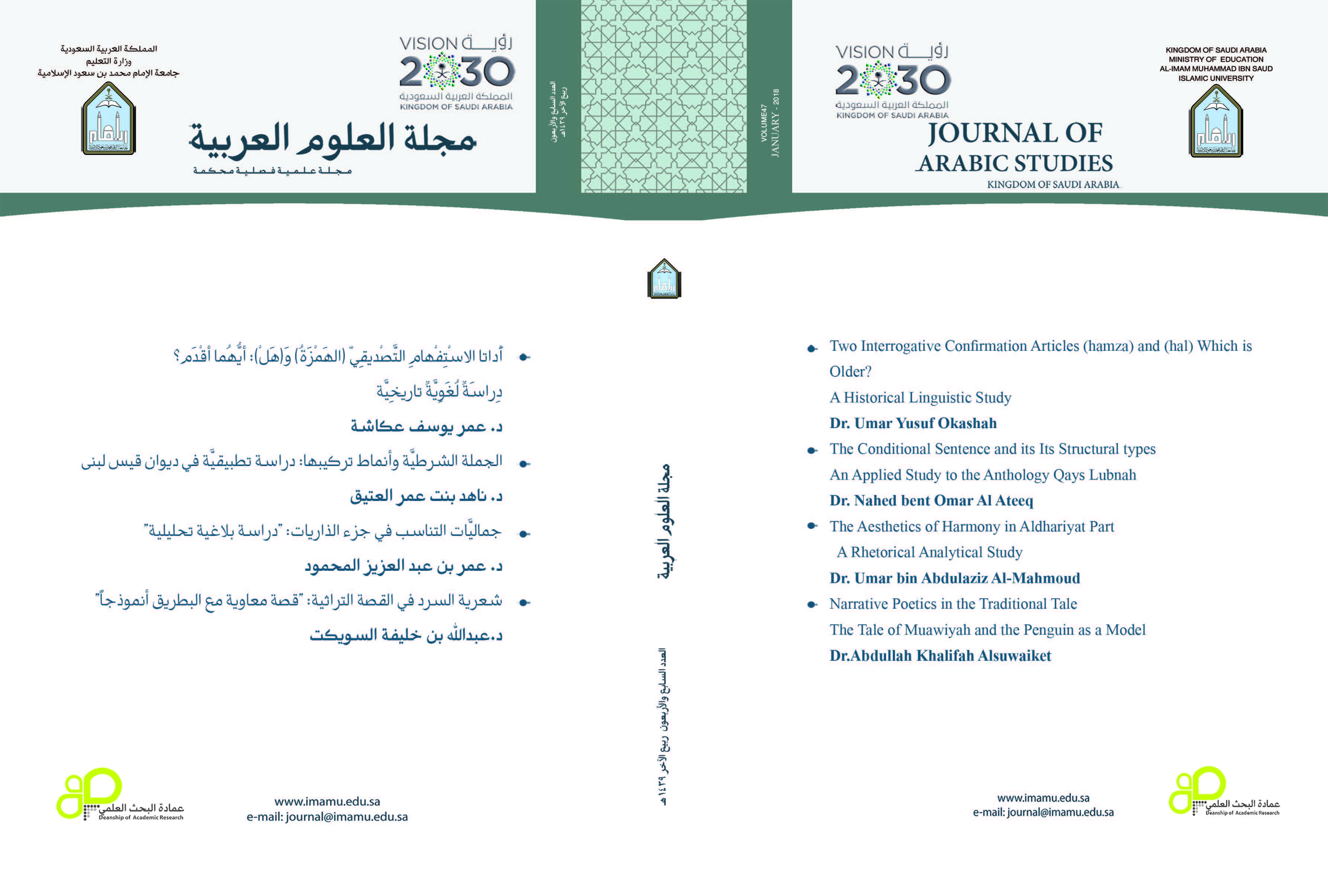Two Interrogative Confirmation Articles (hamza) and (hal) Which is Older? A Historical Linguistic Study
Keywords:
Interrogative articles- interrogative of confirmation– hal - the interrogative hamza-– oldest interrogative of confirmation.Abstract
The study addresses a linguistic historical issue that has long preoccupied grammatical thinking. It is about the two interrogative articles (hamza) and (hal) that are equally used. It is well documented that the interrogative hamza has two functions: conceptualization and confirmation, whereas the interrogative hal is only used for confirmation. If both of these interrogative articles have the confirmation function, which one is older for expressing this form of interrogation in Arabic: hamza or hal?
The study is composed of preleminaries, an introduction, two topics of discussion, and a conclusion. The preleminaries discuss the literal and technical meanings of interrogation, and its two functions: confirmation and conceptualizationin terms of their literal and technical meaning. It also states the rules of the interrogative hamza, and the way it differs from hal. The introduction discusses the importance of the study, the reason for choosing this topic, the aim of the study, the methodology, and reviews previous studies. The first topic of discussion is devoted to addressing the opinions that presuppose the primacy of hamza as an interrogative for the function of confirmation. The second topic of discussion is devoted to discussing the reasons for the development of hal. Finally, the conclusion discusses the most important findings.
The importance of the study lies in the fact that the issue being investigated has not been resolved yet -to the best of my knowledge- and no opinion about it has been favored, even by the most prominent Arab linguists as well as orientalists. The research discusses sixteen linguistic points of view in order to show that the opinion that hamza is older than hal is wrong, and that hal was originally used for interrogative conceptualization. The different points of view (sixteen) are classified into three: first, phonetic and syntactic structure, second, sentence structure, and third, textual structure. The research, then, shifts to the attempt to find an explanation to why the Arabic interrogative hal was introduced after hamza. The finding is the Arabic language tendency to surpass the difficulty concerning the pronunciation of hamza, to specify the articles, and to strengthen the interrogation.




